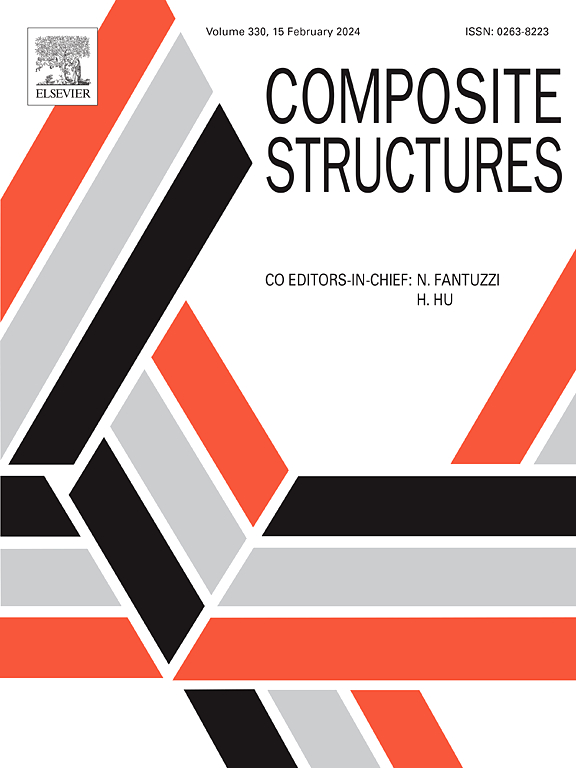Uniform winding path generation for Non-Axisymmetric mandrels
IF 6.3
2区 材料科学
Q1 MATERIALS SCIENCE, COMPOSITES
引用次数: 0
Abstract
Creating a continuous and uniform winding path may be a challenging task due to the complex surface characteristics, resulting in limitations in designing winding paths for non-axisymmetric mandrel. A design method is proposed to generate uniform winding path for non-axisymmetric mandrel by transforming the mandrel surface into discrete triangle meshes. This method involves generating winding paths in three parts: the basic path, the replication paths, and the transitional paths. Firstly, the variable winding angle of basic path is obtained according to the mandrel cross-sectional characteristics to generate the basic path with uniform fiber coverage; Secondly, the cross-sectional equidistant points are calculated according to the position of basic path on the mandrel cross-section, and the replication paths through the equidistant points are generated based on dichotomy principle to obtain uniform fiber distribution in the circumferential direction of mandrel; Thirdly, according to the required winding pattern, each transitional path is generated to connect its two corresponding replication paths. Finally, the continuous winding path is formed by the basic path, replication paths, and transitional paths. The method is applied to different non-axisymmetric mandrels, and the results show that this method can flexibly generate uniform winding paths with desired winding angle and winding pattern.
求助全文
约1分钟内获得全文
求助全文
来源期刊

Composite Structures
工程技术-材料科学:复合
CiteScore
12.00
自引率
12.70%
发文量
1246
审稿时长
78 days
期刊介绍:
The past few decades have seen outstanding advances in the use of composite materials in structural applications. There can be little doubt that, within engineering circles, composites have revolutionised traditional design concepts and made possible an unparalleled range of new and exciting possibilities as viable materials for construction. Composite Structures, an International Journal, disseminates knowledge between users, manufacturers, designers and researchers involved in structures or structural components manufactured using composite materials.
The journal publishes papers which contribute to knowledge in the use of composite materials in engineering structures. Papers deal with design, research and development studies, experimental investigations, theoretical analysis and fabrication techniques relevant to the application of composites in load-bearing components for assemblies, ranging from individual components such as plates and shells to complete composite structures.
 求助内容:
求助内容: 应助结果提醒方式:
应助结果提醒方式:


